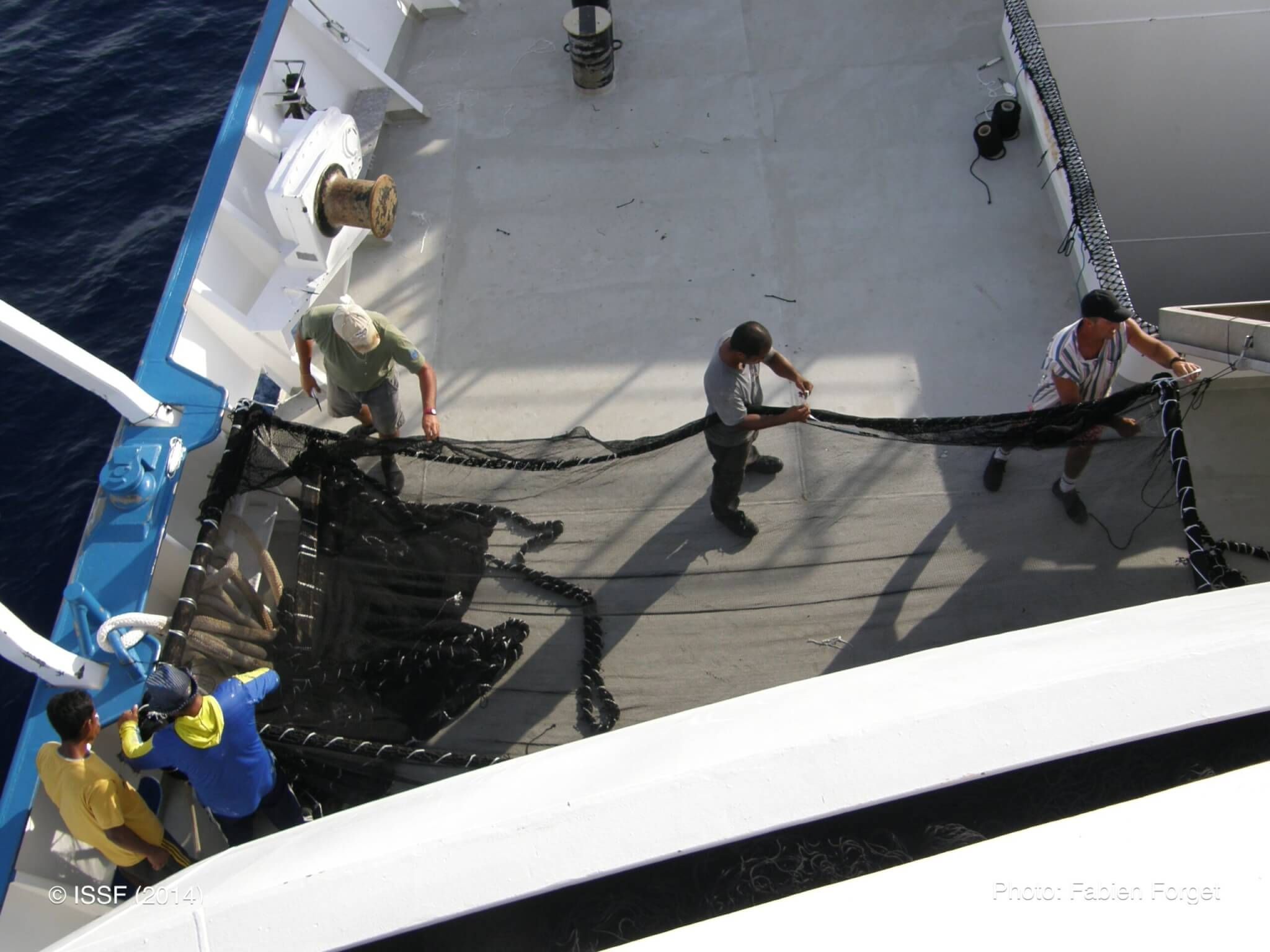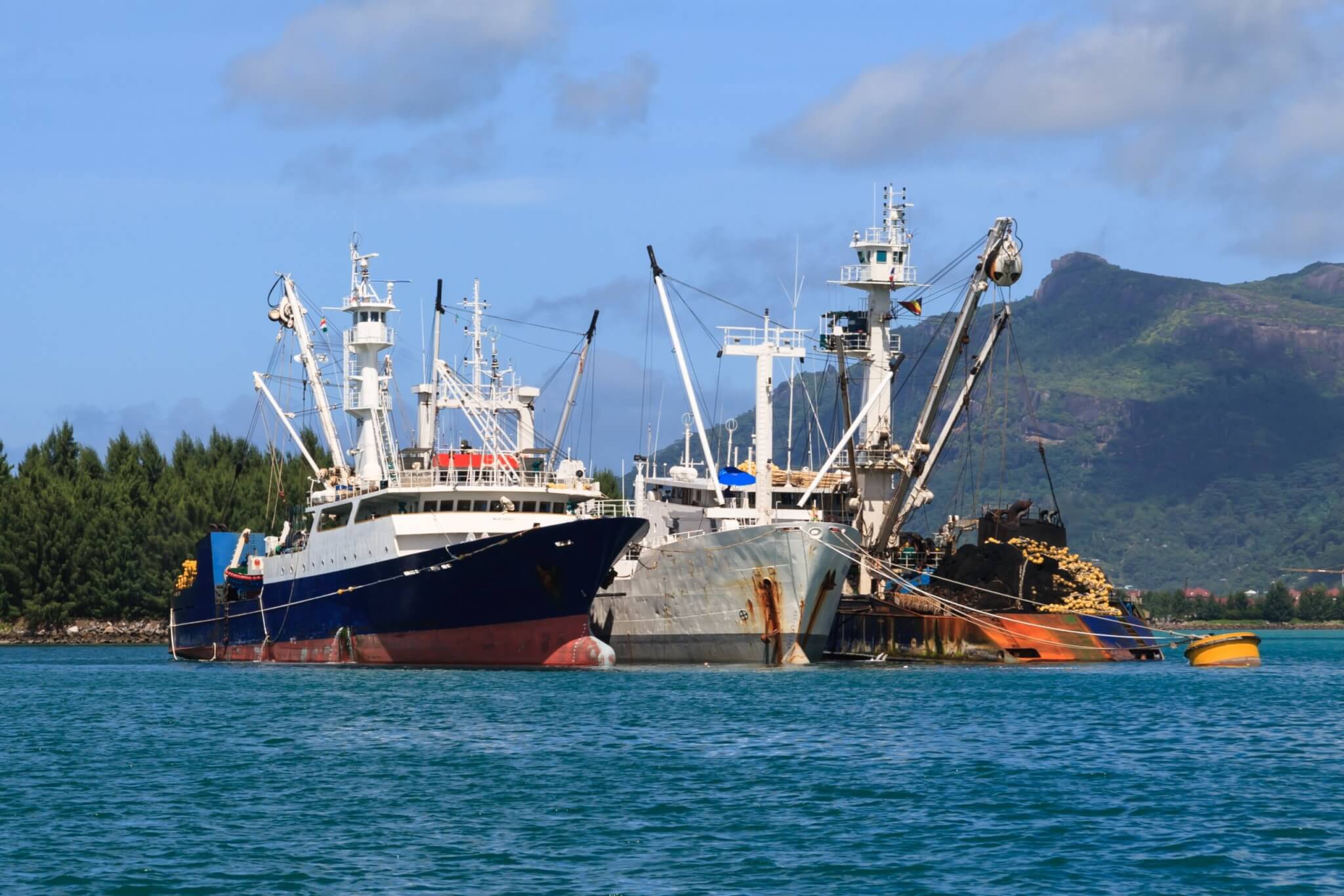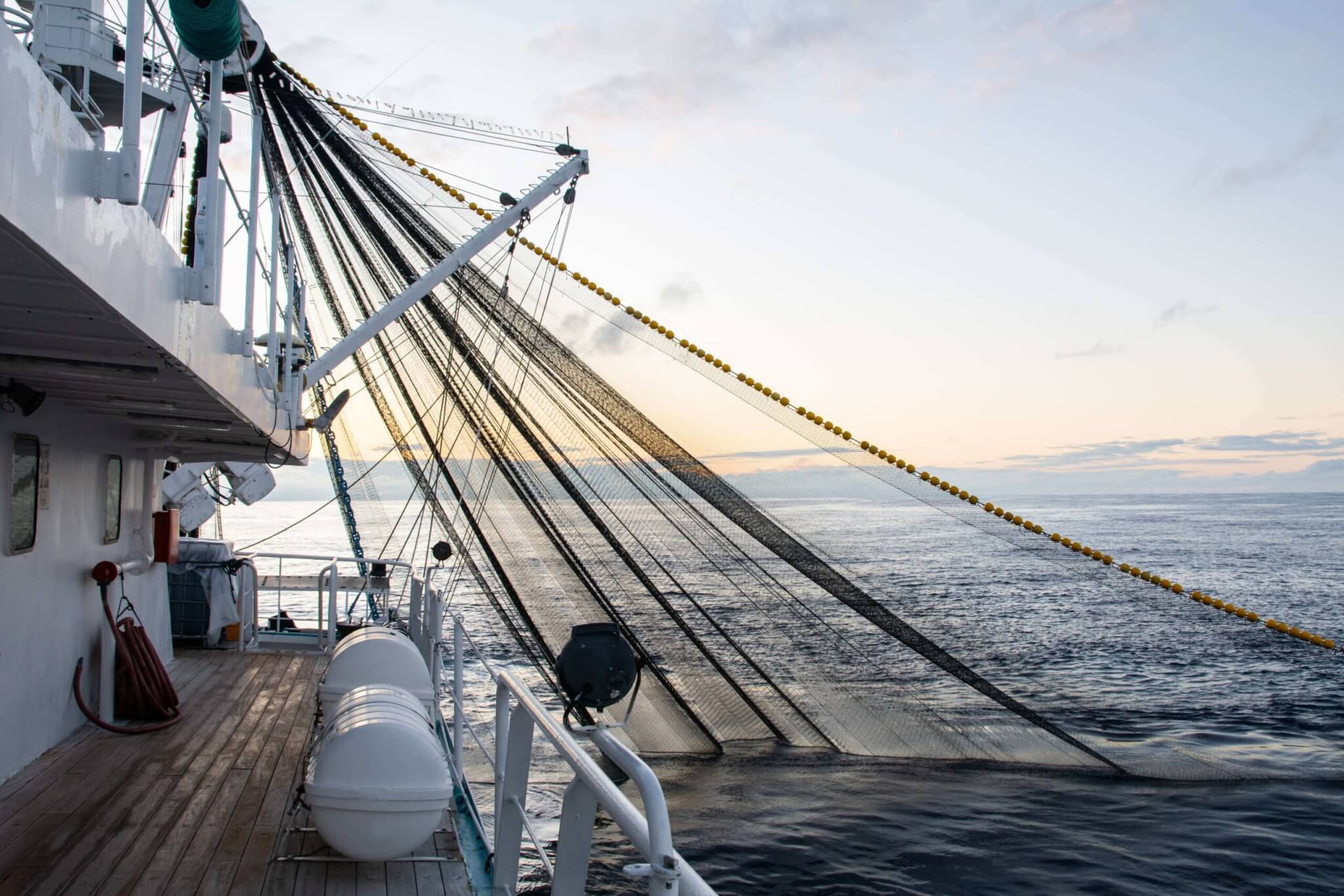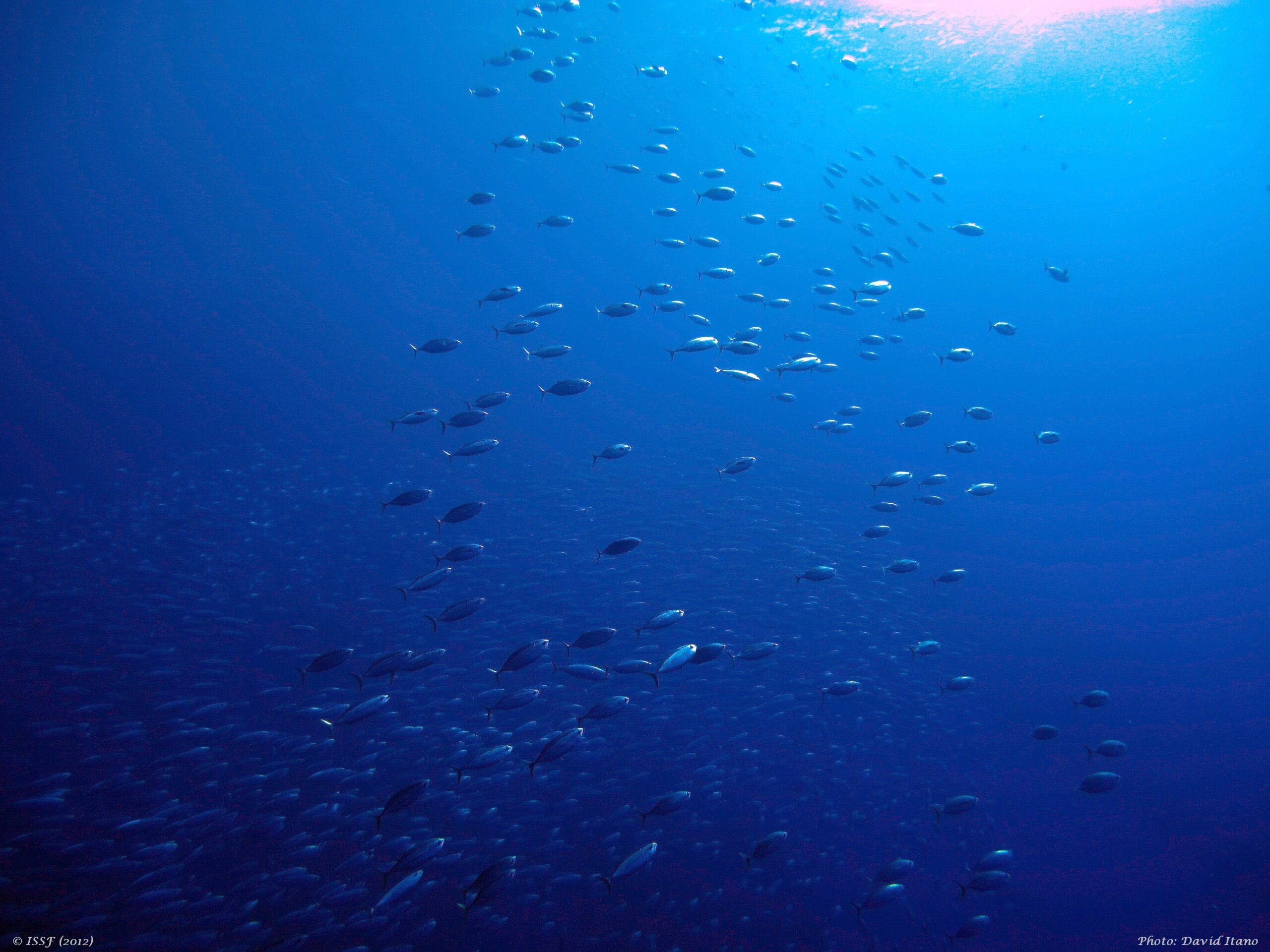
Verifying Sustainability Commitments in the Global Seafood Supply Chain
As part of its commitment to foster transparency and accountability in the fishing industry, ISSF engages third-party auditor MRAG Americas to assess ISSF participating seafood companies’ compliance with ISSF conservation measures according to a rigorous audit protocol. ISSF President Susan Jackson sat down with MRAG Americas Vice President Dr. Graeme Parkes to discuss the ISSF audit and compliance process.
SSJ: How long has MRAG Americas audited ISSF participating companies’ operations, and what is the value of this continuous engagement?
GP: We have been providing auditing services to ISSF since 2012, starting with the vessels on the PVR and adding the participating companies’ activities in 2014. This continuous engagement has provided a high level of consistency and stability, without which reliable tracking of progress over time of the program and participants’ grading would be highly challenging. The longevity of the program and resulting uniformity in methodology and implementation have provided enhanced credibility to the auditing process and outcomes.
SSJ: Why is an independent audit an important part of the ISSF audit and compliance process? What is the value of a third-party audit rather than ISSF performing this function internally?
GP: Independent auditing adds value to the ISSF compliance process in several important ways. First and foremost, it adds credibility in a way that an internal audit cannot. Participants and other stakeholders need to have confidence that conformance with ISSF conservation measures is being assessed accurately and consistently. Of course, this can be done internally, but an external, independent process undertaken by a qualified provider with an established track record in rigorous conformity assessment provides a highly visible level of integrity and reliability.
Additionally, our many years of experience in fisheries and supply chain auditing enables ISSF to understand the auditing implications of new conservation measures at an early stage, helping them to grow the program as effectively and efficiently as possible.
SSJ: From the auditor’s perspective, what are the challenges of auditing seafood companies on multiple measures? Can you explain how MRAG audits a particular commitment?
GP: The auditing challenges arise in part from the number and range of ISSF conservation measures, but also the variety of ISSF participating companies’ sourcing practices. The sourcing of tunas by the companies covers a broad range of species, gear types, geographic regions, and hence RFMO jurisdictions.
Among other things, the audit team needs to be familiar with the differing requirements for fishing licenses, transshipment declarations, captain statements and catch certificates to assess accurately the validity of the documents presented as evidence of conformance. We spend significant time and effort on maintaining audit program consistency. This requires multiple levels of scrutiny by the whole audit team, including reviews of prior audit reports, to ensure uniformity in grading of compliance within and between years. The resulting stability in audit outcomes has helped companies to understand the evidence requirements for audits, that information requests for auditing are fair, and that the program is equitable for all participants.
Traceability audits are a good example to consider. The traceability exercises demonstrate a participating company’s ability to trace its products from can code or sales invoice back to a vessel and trip, enabling our audit to assess its conformance along the supply chain. The auditor reviews recent mock recalls, if available, and selects a sample of can codes or sales invoices by label and destination from which the company will conduct traceability exercises. The traceability exercises also enable the auditor to cross-reference evidence provided in connection with other conservation measures.
SSJ: We hear a lot about “transparency” in the fishing industry today. What does this mean in practice for a process like the ISSF one?
GP: Transparency is essential to explain how the audits are undertaken and what they show about individual company conformance with the conservation measures. This is why the audit protocols and participating company annual audit reports are publicly available. However, this transparency must be applied with forethought and foresight; it cannot extend to all levels of the program. With much of the detailed information provided for audits being confidential and commercially sensitive, participating companies must have confidence and trust in the independent auditor. They must be assured that while the results of their audit will be made public, irrespective of the audit findings, their proprietary information used in the assessment of conformance remains protected and confidentiality is not compromised.
SSJ: How do insights and findings from audits inform ISSF conservation measures — expanding existing measures, for example, or suggesting a need for additional measures?
GP: Our experience from auditing the ISSF program, and other independent auditing activities, enables us to counsel ISSF regarding the auditability of proposed new conservation measures and amendments to existing ones. However, as independent auditors, we do not advise ISSF on the need for these measures – this is up to the organization itself.
SSJ: Is auditing like this common with sustainable fishing commitments, or is there something unique or important about the ISSF-MRAG model?
GP: The types of conservation measures agreed by ISSF are not unique; they overlap with some of the key requirements of other fisheries sustainability initiatives. But the combination of ISSF’s approach to establishing participating companies’ sustainability commitments with MRAG Americas’ independent conformance assessment using a comprehensive series of audit protocols is ground-breaking.
ISSF is a cross-sector organization that draws on state-of-the-art environmental and scientific expertise to develop conservation measures with which participating companies commit to conform. The sustainability commitments of these companies are consequently meaningful, transparent, and enduring, and there is a high level of cooperation with the independent auditing procedures established by MRAG Americas.
If companies receive non-conformances during their audits, they know there are real consequences, and they are quick to remedy their practices to ensure these non-conformances are mitigated and not repeated. The results have been, and continue to be, transformational in the sustainability performance of the canned tuna supply chain and have the potential to make similarly far-reaching advancements in other seafood sectors.


